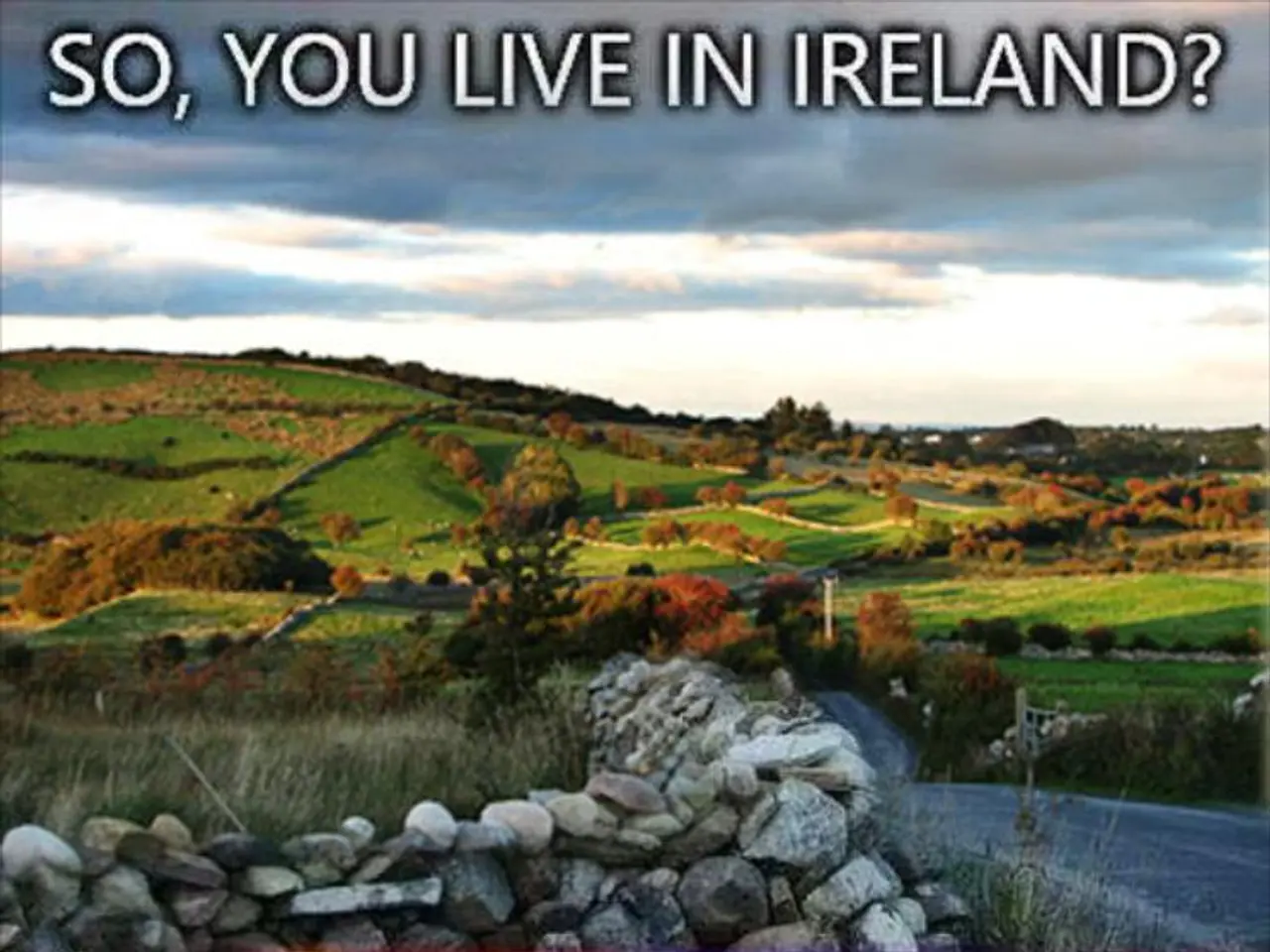Canada's 2025 wildfire season is now the second-most severe on record, driven largely by fires in the Prairies regions.
Fighting Record-Breaking Wildfires in Canada: A Comprehensive Approach
Canada is currently battling some of the most intense wildfire seasons on record, with the military and coast guard joining the efforts in Newfoundland and Labrador, and the Canadian Armed Forces aiding in Saskatchewan [1]. As of Friday, over 1,400 international firefighters have been called in to help, with 446 of them currently working in Canada [2].
The current fires have surpassed the next worst season in 1989, and the 2023 season saw more area burned compared to the current season [3]. Manitoba and Saskatchewan account for more than half the area burned so far, but British Columbia, Alberta, and Ontario are also well above their 25-year averages [4].
Climate change, driven by the burning of fossil fuels, has extended and intensified Canada's fire season, according to scientists [5]. To combat this, the government is investing in research projects and initiatives that aim to build a stronger understanding of wildfire risks, promote adaptive forest management, and restore cultural fire practices led by Indigenous peoples [1][3].
Building Wildfire Knowledge and Indigenous-Led Fire Stewardship
Key measures include building and mobilizing wildfire knowledge through funded research to improve resource allocation and prevention efforts [1][3]. Additionally, the government is supporting Indigenous-led fire stewardship projects, which integrate traditional cultural fire practices into wildfire management to build resilience and better protect communities and ecosystems [1][3][5].
Improving Forest Management and Emergency Response Capacity
The government is also enhancing land use and building policies by redirecting new housing away from high-risk wildfire zones and promoting fire-resistant building codes to reduce community vulnerability [2][4]. Moreover, they are improving forest management by controlling flammable invasive species, avoiding harmful practices like overuse of herbicides, and advocating for full-scale herbicide-free reforestation to restore healthy, less flammable forests [2].
To expand emergency response capacity, the government is investing in new wildfire innovation and resilience initiatives such as the Wildfire Resilient Futures Initiative and establishing centers of excellence that coordinate research and practical wildfire prevention strategies [4][5].
Addressing Climate Change and Preparing Communities
Recognizing that climate change is a major driver of more frequent and intense wildfires, the government is accelerating emissions reduction efforts [2][4]. Experts also emphasize the importance of better preparing for intensifying wildfires. This includes integrating fire breaks into community design, planning safe evacuation routes, completing annual emergency planning exercises, and other measures to prepare for the future [6].
The Canadian Interagency Forest Fire Centre is exploring partnerships with countries whose fire season doesn't closely overlap with Canada's, such as Chile, Costa Rica, and Mexico [7]. However, it's clear that a comprehensive approach is needed, combining scientific research, Indigenous knowledge, improved land use planning, effective forest management, and climate policy [1][2][3][4][5].
Thousands of people have been displaced and communities across Canada have been stifled with wildfire smoke. The last three fire seasons, including the current one, are among the 10 worst on record. The BC Wildfire Service has warned of very dynamic fire situations, and the Manitoba state of emergency has been extended 2 more weeks due to continuing wildfires [8][9].
[1] Government of Canada. (2023). Investing in Wildfire Preparedness. Retrieved from https://www.canada.ca/en/public-services-prosecution-canada/services/national-enforcement-services/forest-fire-prevention/wildfire-preparedness.html
[2] Government of Canada. (2023). Wildfire Resilient Futures Initiative. Retrieved from https://www.canada.ca/en/public-services-prosecution-canada/services/national-enforcement-services/forest-fire-prevention/wildfire-resilient-futures-initiative.html
[3] Government of Canada. (2023). Indigenous Fire Stewardship. Retrieved from https://www.canada.ca/en/public-services-prosecution-canada/services/national-enforcement-services/forest-fire-prevention/indigenous-fire-stewardship.html
[4] Government of Canada. (2023). Wildfire Prevention and Mitigation. Retrieved from https://www.canada.ca/en/public-services-prosecution-canada/services/national-enforcement-services/forest-fire-prevention/wildfire-prevention-mitigation.html
[5] University of Waterloo. (2023). Climate Change and Wildfires in Canada. Retrieved from https://uwaterloo.ca/intact-centre-climate-adaptation/climate-change-wildfires-canada
[6] University of Waterloo. (2023). Preparing for Intensifying Wildfires. Retrieved from https://uwaterloo.ca/intact-centre-climate-adaptation/preparing-intensifying-wildfires
[7] Canadian Interagency Forest Fire Centre. (2023). International Cooperation. Retrieved from https://www.cifc-ccif.gc.ca/en/international-cooperation
[8] CBC News. (2023). Thousands Displaced as Wildfires Rage Across Canada. Retrieved from https://www.cbc.ca/news/canada/thousands-displaced-as-wildfires-rage-across-canada-1.6534586
[9] Global News. (2023). Manitoba Extends State of Emergency Due to Wildfires. Retrieved from https://globalnews.ca/news/9022673/manitoba-state-of-emergency-wildfires/
- The government is addressing climate change by investing in research projects and initiatives focused on wildfire risks, aiming to build a stronger understanding of environmental science related to wildfire management and climate policy.
- To prepare communities for more frequent and intense wildfires, policymakers and experts recommend integrating fire breaks into community design, planning safe evacuation routes, completing annual emergency planning exercises, and other measures to enhance general news coverage on emergency preparedness.
- Recognizing the role of climate change driven by science and policy-and-legislation surrounding fossil fuel burning, the government is also taking steps to combat climate change by reducing emissions and promoting the use of fire-resistant building codes as part of its overall approach to wildfire management and mitigation.








